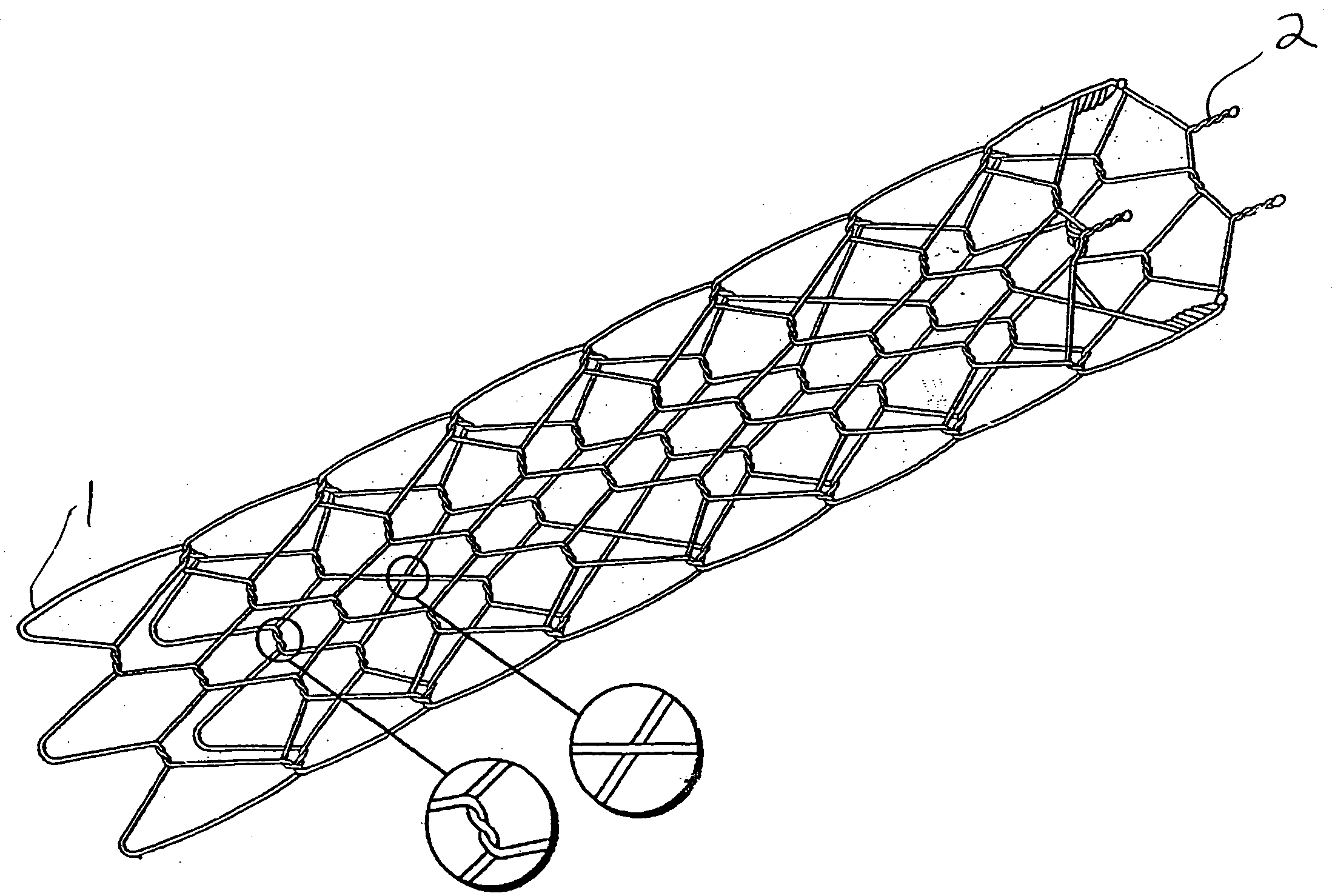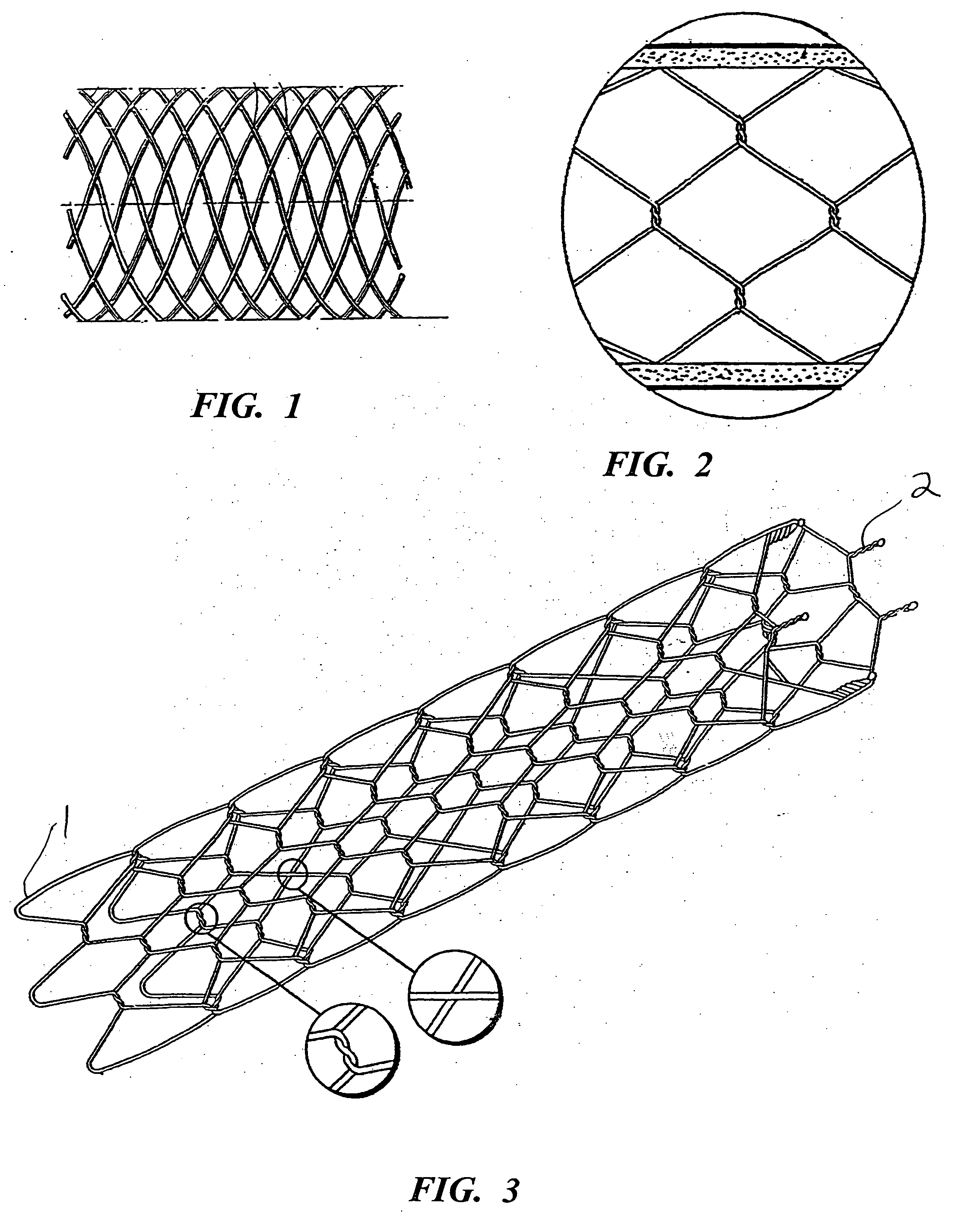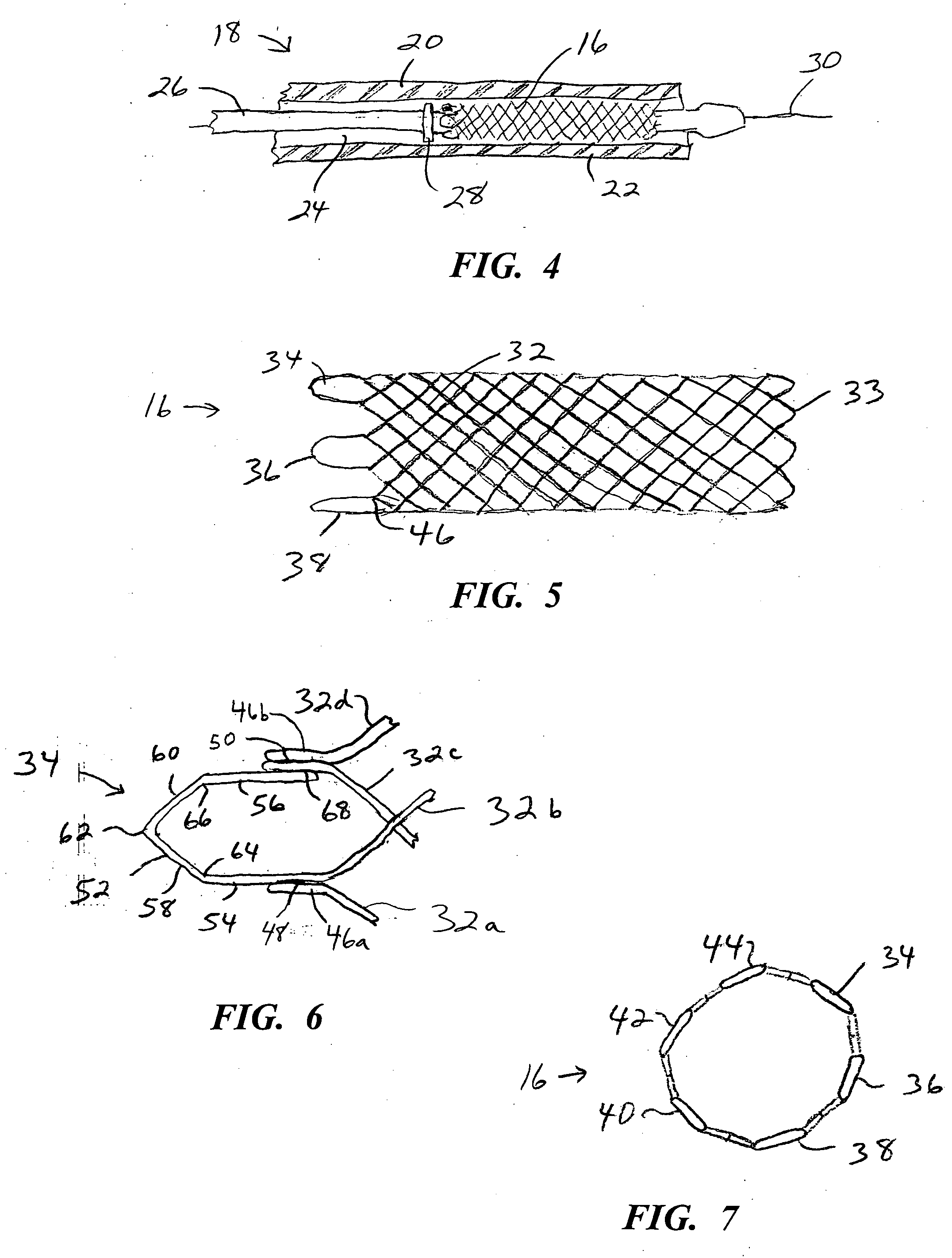Stents with attached looped ends
a looped end and stent technology, applied in the field of stents, can solve the problems of difficult position adjustment of the deployed stent, particularly in the direction of the extension of the welded or twisted end termination, and present a risk of tissue damage, so as to facilitate the intraluminal delivery without the risk of surrounding tissu
- Summary
- Abstract
- Description
- Claims
- Application Information
AI Technical Summary
Benefits of technology
Problems solved by technology
Method used
Image
Examples
Embodiment Construction
[0037] Turning now to the drawings, there is shown in FIG. 1 a stent 16 fabricated according to the present invention, and part of a device 18 used to intraluminally deliver the stent to an intended treatment site and deploy the stent at the treatment site.
[0038] The device includes an elongate, flexible outer catheter 20 having a distal end region 22, along which the outer catheter surrounds stent 16 and maintains the stent in a reduced-radius, axially elongated delivery state to facilitate an intraluminal delivery of the stent to the treatment site.
[0039] Stent 16 is contained within a lumen 24, which runs substantially the entire length of the outer catheter. An inner catheter 26, contained in the lumen, extends lengthwise along the outer catheter and is moveable axially relative to the outer catheter. A deployment member 28 is fixed to inner catheter 26, proximally of stent 16. Inner catheter 26 includes a lumen (not shown) to accommodate a guidewire 30, which is used to guide...
PUM
| Property | Measurement | Unit |
|---|---|---|
| length | aaaaa | aaaaa |
| shape | aaaaa | aaaaa |
| external stress | aaaaa | aaaaa |
Abstract
Description
Claims
Application Information
 Login to View More
Login to View More - R&D
- Intellectual Property
- Life Sciences
- Materials
- Tech Scout
- Unparalleled Data Quality
- Higher Quality Content
- 60% Fewer Hallucinations
Browse by: Latest US Patents, China's latest patents, Technical Efficacy Thesaurus, Application Domain, Technology Topic, Popular Technical Reports.
© 2025 PatSnap. All rights reserved.Legal|Privacy policy|Modern Slavery Act Transparency Statement|Sitemap|About US| Contact US: help@patsnap.com



